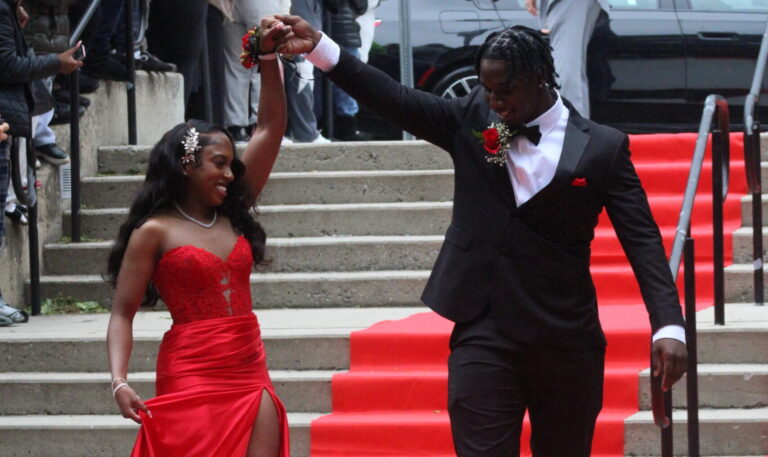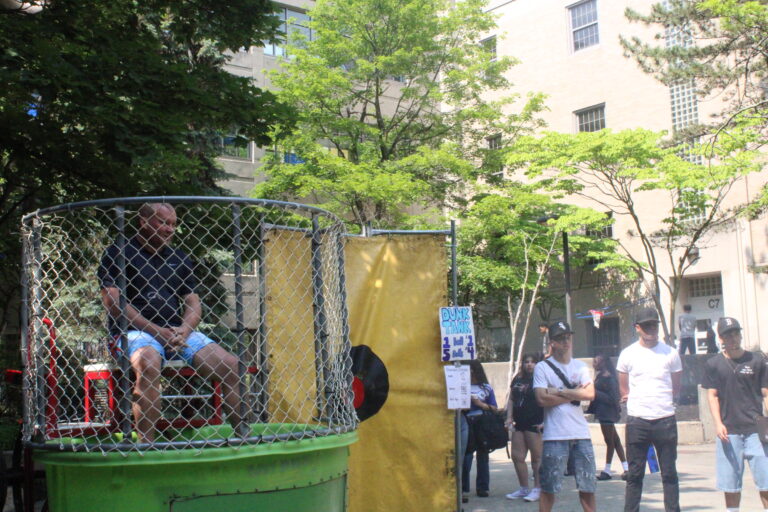The Anti-Defamation League is an international organization that was founded in 1913 by a Jewish service organization to fight anti-semitism. Today, it has many different branches, one of them being their “A World of Difference” program. According to the ADL’s website, the program is designed to help people recognize bias and the harm it could subject other people to, build an understanding of the values and positives of diversity, and confront racism, anti-Semitism, and other forms of bigotry. This is the second year the program has been a part of Malden High.
The World of Difference program is not just used by schools, but universities, law enforcement agencies, and community organizations as well. The professional development aspect of the program consists of facilitators from the organization coming in and training teachers to run the program and implement it in high schools.
The second part of the program involves the students themselves. The Peer Education portion of the program prepares high school students to “work with their peers to confront bias and create inclusive environments in their schools and communities” (ADL Official Website).
Guidance counselor Taryn Belowsky, one of the two advisors for the program explained that each year, they train about thirty sophomores and juniors. Similarly to any other club at Malden High, it is open to everyone, as long as they fill out the application. From those applicants, they narrow it down based on who they think would be best for the program. Those thirty students that get chosen are then trained for two full school days in the beginning of the year on everything from bias, prejudice, discrimination, proper terminology, and even more.
Sophomore Nathan Murillo expressed that he joined ADL because he has “always been interested in social justice” and was upset about the amount of inequality found in America, even in the 21st century.
“You would think after the Civil Rights Movement [that] racism would have ended… but hatred and racism is [just] as rampant as it has ever been,” Murillo stated. Through ADL, he hopes to help prevent hate by “educating the uneducated” and teaching students about real world issues that the school would not normally. This also happens to be his favorite part of the program, learning about his own biases, and topics not usually found in classrooms.
Juliana Davidson, another sophomore in the program agreed with Murillo. She said that “ADL focuses in on modern-day issues that often get ignored in society.” Davidson initially joined because she saw the “potential and hope for change imbedded in [ADL’s] goals.”
After the two days of training, the group meets every Monday after school. In their meetings, they check in with the students and discuss current events in the school or community that relate to the programs’ initiatives. In addition, they also plan for upcoming projects.
This is when the Peer Leadership element of the program comes in. According to ADL, the Peer Leadership training is intended to promote leadership skills in youth by providing students with “practical opportunities to develop and implement transferable skills in leadership.”
The organization believes that in order for students to become effective leaders, they need opportunities to develop and practice these leadership skills “within a context that has personal meaning and relevance to them.” As peer leaders, students get the chance to learn about social justice issues through extensive training and after that, they work together to address those issues by choosing projects of their own to carry out in freshman advisory.
Belowsky noted that there will be two lessons in total throughout the school year during the advisory period for the freshmen. Since this is only the second year ADL has been at the school, only last years’ freshmen have had a chance to experience the lessons from the peer leaders.
With the help of last year’s peer leaders, the students this year have picked “identity sculptures” as one of the two lessons the freshmen will be engaging later in the year. It is basically a craft project made with chenille stems that represent each persons’ individual identity.
As mentioned above, the program is still new to Malden High, so Belowsky and math teacher Thomas Snarsky are working together as advisors. Belowsky said that this year, they are trying to “take a step back and let the peer leaders hash out issues that they have… about what they are experiencing in the world.” The two of them are actively trying to let the students “develop their own voice and their own way to handle different kinds of things.” Belowsky wants to make sure that when certain issues arise in life, the students know the appropriate way to react and respond to them.
Belowsky’s and Snarsky’s role as advisors also extends to the actual planning of the facilitation of the program and organizing meetings to maximize productivity. This year, Snarsky had a new idea to create an e-board so students from last year can still be involved.
One of the reasons why Belowsky got involved with the program herself was to be able to “give students a space to speak about issues that they unfortunately will [have to] face.” Since Malden High is so diverse, it has come to be a lot more accepting compared to other high schools. However, diversity and acceptance in not the norm. Belowsky admitted that “it is hard because [the] school is so big” to reach everyone through ADL, but regardless, it is still important for students in ANY high school to have a place to openly talk about real-world issues, whether they are affected by it or not.
Even though there is no possible way to measure the full impact of the program on the students of Malden High, the effect it has on the peer leaders is evident. Davidson spoke about the “Pyramid of Hate,” which represents how growing tolerance to hateful actions and words in the community only makes the hatred stronger. After learning about this, it only encouraged her more to help “lessen the tolerance” and instead, “ignite hope for a peaceful and unified community.”
In just such little time, Davidson has learned to become comfortable with being uncomfortable. Many of the topics covered in the program are currently relevant to events in the world, and therefore can be sensitive. She has learned to speak with “the right amount” of caution to express her feelings respectfully.
Sarah Oliveira, another sophomore in ADL, feels similarly to Davidson. Her favorite part of the program is being able to be vulnerable when they are talking about topics that don’t always get attention. In the long run, Oliveira wants to make a positive impact on a student, by getting them to think about their own biases, or prejudice, that is “oftentimes, unintentional” and bring it into light and help them become better.
Last year, Oliveria was one of the students in the freshman advisory, being introduced to the goals of the ADL, and now she has stepped up to become one of the peer leaders. For the freshmen this year that will soon be able to see what the peer leaders have in store for them, they are highly encouraged to join the program and become a part of making a positive change for the greater good.



